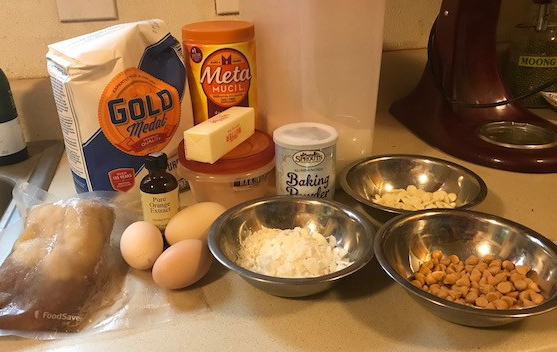When all us kids were growing up, since both my parents had careers—a rarity in the ’60s—we all learned to cook quite early. Because we were taught by both parents the love of cooking and respect for food, we are all still very interested in food and cooking. Today it’s called being a foodie, because society has a tendency to categorize everything. Most of my recipes from memory are more process than exact measurements. If someone asked me to show them how to make all day spaghetti sauce, this is how I’d do it.
The Pan. Back in my school days, early 1960s, we cooked all day spaghetti sauce in an electric frypan. I don’t know if there are any modern versions of that around anymore. A lovely appliance before all the gidgy-gatets of later decades. The domed top had a 4-petal valve that simply opened or closed, based on whether or not you wanted steam to escape. The beauty of this pan was it was all self contained, and on the handle you could set the heat to high while sauteéing, then to simmer when letting it meld all day.

These days I’d use a tall sided large sauté pan on the stovetop. Tomatoes are rather acidic. I never use my cast iron pan for tomato sauce unless I honest-to-gosh have nothing else to use. You can use cast iron but only if it is well seasoned and you clean it properly (no soap) after the sauce is done. Don’t leave tomato sauce in a cast iron pan after the sauce is done cooking due to the acidity of tomatoes. I have an instant pot, and can make sauce in it, but then it’s not all-day poked and prodded spaghetti sauce!
All day spaghetti sauce always starts by taking the small inner, tender stalks of celery and chopping them small. Don’t include the leafy part, save those in the freezer for soup! If you don’t have celery, make another dish. Seriously. No celery = no soup, no spaghetti sauce, no tuna salad, no egg salad. You get the idea.
Add onion to that, probably half a Vidalia or yellow onion as white onions tend to be a bit too hot. For size go between dicing and mincing. You do not want huge chunks of onion in your sauce, as the sauce should cling to the spaghetti noodles. Keep the bits small. Sauté onion and celery with butter or oil until translucent. Tip: Butter adds a depth no oil can accomplish. Add salt and pepper. Your kitchen should start to smell really good at this point.
Add minced garlic, and if you don’t have any, use a very small amount of garlic powder. Garlic powder is very strong so a little goes a long way. I stay away from ‘salts’ of any kind such as garlic or onion salt. The powder is more concentrated and you avoid too much salt when what you want is flavor. I usually sprinkle a bit in the palm of my hand so as not to overdo it, then flip that amount into the sauce. Nothing will ruin your sauce quicker than too much garlic powder. It’s much too bitter and you can’t subtract it once added. When adding onion powder and garlic powder to dishes, the best ratio is 2/3 onion, to 1/3 garlic.
Add a pound of ground beef. Today I use grass fed beef or Bison. You could add a bit (1/3 lb) of ground pork if you wanted for extra flavor. The meat should have some fat in it but not too much. Fat helps flavor the sauce. Cook until the ground meat is nicely done and the onion, celery and garlic are translucent.
Whole Canned Tomato. I always add a can of whole, peeled tomatoes, juice and all. Size of the can is up to you. If you add a large can, use a tablespoon of tomato paste to thicken the sauce. With your spatula, a knife or your clean hand, break those whole tomatoes into big chunks and add to the sauce. For me this addition is what makes or breaks good spaghetti sauce. I love those large natural chunks of real tart tomato in the sauce. My mouth waters just thinking about it.
The best tomato on the planet is the San Marzano variety. If you can find it whole, canned, in sauce form, whatever form, buy it!


Home Canned Tomato Sauce. When I was growing up, I usually went down to the basement and got a can of Mom’s home canned tomato glop she used to preserve in quart jars. You can use any sort of homemade or store bought sauce you prefer.
Store Bought Tomato Sauce. Plain unseasoned tomato sauce in a can is something I occasionally use. For seasoned sauce my favorite is canned Hunt’s or DelMonte. You can use tomato sauce in a jar as well. They tend to be a bit better quality but a lot pricier. Since I season my own tomato sauce as I go, why spend three our four times more on one jar of sauce when you don’t have to? My brand of preference is usually the least expensive and does the job perfectly. Why spend a lot on sauce when you are going to doctor up your own? If you did a side-by-side taste test with fancy or plain sauce in the finished product, you may not notice any difference. I’d rather have 6 cans of sauce than one fancy jar.



Seasoning. Mom also used 1/2 to 1 package of spaghetti seasoning. McCormick, Lawry’s, or Knorr should do just fine. I use about half a package. It adds a little extra depth to the sauce. Add whatever spices you want to such as a bit of oregano, thyme, basil, etc. But remember if your tomato sauce may already come with spices so go easy. A dried spice goes a long way. And dried spices you add take a while to open up and lend their flavor to the sauce. That’s why all day spaghetti sauce is so good!
A secret ingredient! As a young lady, my mother stayed with a German family during summer teaching in Wisconsin. She learned one secret to good sauce was to use freshly ground Nutmeg to offset the acidity of the tomato. I can’t make spaghetti sauce without it! If you must substitute, you can use mace, a spice which is found wrapped around each nutmeg. Or use a tiny pinch of sugar to offset the acidity. If you use sugar to cut the acidity, go easy on as it’s a bit too sweet and not quite the same. I’ve used allspice in a pinch if I have no nutmeg or mace. (How could I never have nutmeg? I always have a jar of whole nuts in the cupboard! I cannot image the day I don’t have a few nuts around for grinding.) Thanks to Wikipedia for these photos of nutmeg and mace.



The fun of all day spaghetti sauce is to poke, simmer, prod, taste, tweak, and generally have fun cooking this. Keep the lid on it after it has cooked down to the right thickness or consistency. The lowest heat is best for an all day sauce.
Add water as you go. The sauce should reduce down nicely, but if the flavor is not there yet, you can add a bit of water to enable a longer cooking time. The flavors of the sauce meld over time.
Meld. That’s the correct term for what your sauce should do as it simmers gently all day long. The flavors from the spices (dried or fresh), salt, pepper, garlic, onion, celery, all that tomato loveliness, along with the fat from the meat—really the whole shebang should be unfolding like a flower, slowly, all day long. The second day (after being refrigerated) the sauce is at its peak! Much like a good homemade soup.
The marriage of tomato and butter is magical. But only add the butter just before serving. A tablespoon or two of pure butter will work wonders. Never use margarine for this, it is not the same and will not taste the same.
Have fun with your all day sauce and teach your kids to make it by the time they can reach the stove top!







